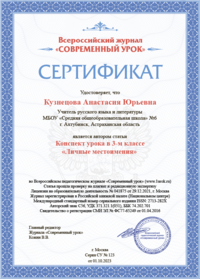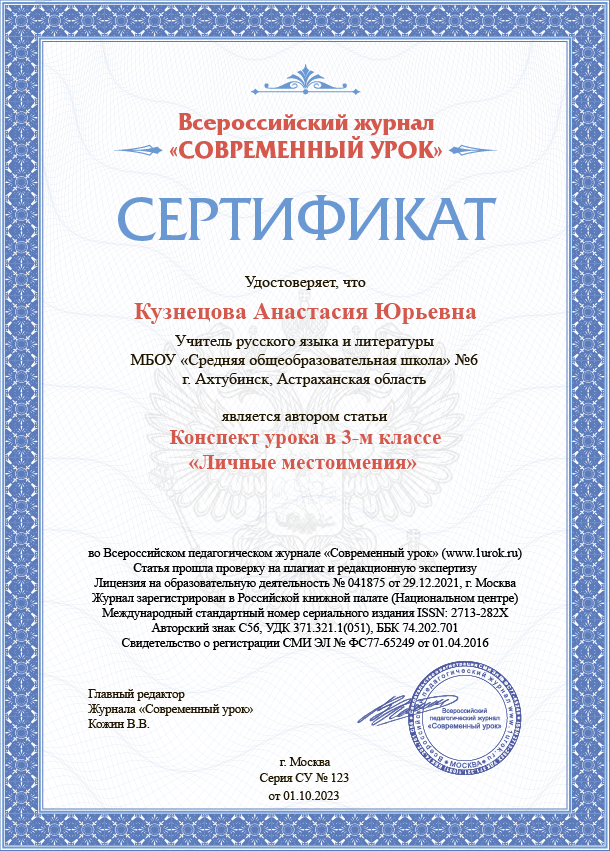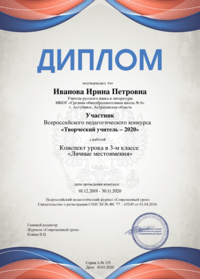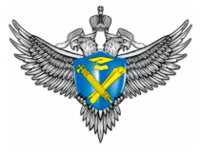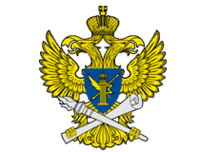Урок-экскурсия
Автор: Колтунова Наталья Алексеевна
Организация: МБОУ СОШ Селихинского СП Комсомольского МР Хабаровского края
Населенный пункт: Хабаровский край, с.п. Селихино
Технологическая карта урока по английскому языку на тему “Букингемский дворец”
Учитель: Колтунова Наталья Алексеевна
Предмет: Английский язык
Класс: 10
Тип урока: комбинированный
Урок-экскурсия
|
Тема |
Visiting Buckingham Palace |
|
|||
|
Цель и задачи |
Цель (для учителя): создать условия для осмысления учащимися информации о Букингемском дворце, используя текст и погружение в виртуальную реальность, для того чтобы создать интерактивный коллаборативный продукт ( доска мнений и впечатлений о посещенном месте) Задачи: 1.Образовательная: Расширение языковой и коммуникативной компетенции, формирование социокультурных знаний учащихся 2.Развивающая: Развивать речемыслительные и познавательные способности, навыки критического мышления, умения информационно-поисковой работы; Развивать умение давать самооценку своей деятельности. 3 Воспитательная: Воспитывать интерес к изучаемому предмету; Формировать умения работать индивидуально и совместно. Цель для учащихся: к концу урока учащиеся научатся 1. Выделять главную информацию от второстепенной 2. Использовать прилагательные для описания комнат в Букингемском дворце. 3. Составлять заметки с мнениями и впечатлениями, используя инструмент Padlet
Задачи для учащихся:
|
|
|||
|
Планируемый результат |
Предметные умения |
УУД (метапредметные) |
|
||
|
Знать: основные ЛЕ и их сочетаемость для осуществления речевой деятельности – построения высказывания по теме «Букингемский дворец»; употребление прошедшего времени Уметь: понимать на слух учителя в процессе урока, ответы обучающихся, реагировать на задаваемые вопросы, подбирая адекватные речевые средства, строить монологическое высказывание в письменной форме с опорой на план.
|
Личностные: формирование ответственного отношения к учению; формирование коммуникативной компетенции в общении. Регулятивные: осуществление самонаблюдения, самоконтроля, самооценки в процессе коммуникативной деятельности на иностранном языке. Познавательные: развитие способности строить логическое письменное высказывание по теме; Коммуникативные: развитие умения высказывать свою точку зрения, развитие способности к совместной деятельности, развитие умений адекватно использовать речевые средства для решения коммуникативной задачи.
|
|
|||
|
Основные понятия |
Лексические единицы: Chief of Operations Officer главный операционный директор Magnificent= = great = glorious Engage- to be interested in Marble –hard limestone is used in sculpture and architecture Balustrade - a low parapet or barrier, bannisters from figure columns Stairs- construction in the form of a series of steps for ascent and descent Silk - a soft fabric made from threads extracted from the cocoon of a silkworm Porcelain= China - a type of ceramic Mantelpieces =fireplace swags of curtains = garlands of curtains chandeliers=lusters bagpipes- Scottish musical instrument upholstered furniture – furniture covered with fabric |
|
|||
|
Организация учебного пространства |
|
||||
|
Межпредметные связи |
Формы работы |
Ресурсы |
|
||
|
Страноведение, изобразительное искусство |
Фронтальный опрос; Совместная работа; Беседа;
|
Виртуальный шлем Компьютеры Проектор Текст Чек-листы для учащихся Наглядность Карточки Интекрактивная доска падлет 3d видео https://youtu.be/FtGN2wK9g_s https://youtu.be/gen0NgJjry4 https://miniverse.io/experience?e=buckingham-palace-expedition https://youtu.be/WOFMqBxJPAA https://youtu.be/sqMT816yshI https://youtu.be/FtGN2wK9g_s |
|
||
|
|
|
|
|
|
|
|
№ |
Этапы работы |
Содержание этапа |
||
|
1. |
Организационный этап учебного занятия |
Время |
Используемые ресурсы |
|
|
|
1) Орг.момент(настрой на урок-) |
3 минуты |
|
|
|
Деятельность учителя |
Деятельность обучающихся |
УУД |
||
|
Цель: создать атмосферу для иноязычного общения, снять напряженность обстановки Приветствую обучающихся: “Good morning, children! I’m glad to see you. It’s time to think! It’s time to speak! It’s time to show! Ready!Steady! Go!
|
Цель: включиться в иноязычное общение, отреагировав на реплику учителя согласно коммуникативной задаче. Отвечают на реплики: “Morning, teacher! Glad to see you too.” Повторяют рифмовку
|
Коммуникативные: слушать, отвечать и реагировать на реплику адекватно речевой ситуации. Регулятивные: использовать речь для регуляции своего действия.
|
||
|
2 |
2) Речевая зарядка |
5 минут |
Наглядность |
|
|
Деятельность учителя |
Деятельность обучающихся |
УУД |
||
|
Цель: актуализировать знания учащихся о королевской семье (картинки) Some time ago we spoke about the Royal family/ Let’s revise it! Look at these pictures and say to me 1-2 sentences about what you see.
|
Цель: посмотреть на картинку и построить предложение |
Регулятивные: осуществлять самоконтроль правильности выполнения задания. Коммуникативные: умение отвечать и реагировать адекватно речевой ситуации Познавательные: осознанно строят высказывания к картинкам
|
||
|
3 |
Этап целеполагания |
Время |
Используемые ресурсы |
|
|
|
Целеполагание и мотивация
|
3 минуты |
Надпись с перепутанными буквами, картинка по ситуации |
|
|
Деятельность учителя |
Деятельность обучающихся |
УУД |
||
|
Цель– поставить познавательную задачу Прием «зашумленная тема»
My friend is working in a big travel company and his boss asked him make an advertisement about Buckingham Palace collecting comments about it for other tourists. And I promised him to visit this place with my pupils and create a board with our impressions and opinions. Do you agree to help me? What is our aim of the lesson? What should we do to create this board? Используя моделирование жизненной ситуации о моем друге , подвожу обучающихся к цели урока.
|
Цель –сформулировать тему урока и поставить цели урока
It is “Buckingham Palace”
Yes, we do. To create the board of impressions and opinions To visit this place Read the text Learn new words Write comments
|
Познавательные: Принимать участие в беседе, формулировать и ставить познавательные задачи. Регулятивные: Уметь планировать свою деятельность в соответствии с целевой установкой. Личностные: Мотивация учебной деятельности Коммуникативные: Взаимодействуют с учителем во время фронтальной беседы
|
||
|
4 |
Работа с текстом ( поисковое чтение)
|
Время 15 |
Используемые ресурсы |
|
|
|
|
15 минут |
Текст «Buckingham Palace”, наглядность |
|
|
Деятельность учителя |
Деятельность обучающихся |
УУД |
||
|
Цель учителя: подготовить учащихся к просмотру видео о дворце в виртуальной реальности на основе текста, снять языковые трудности Задачи: 1.познакомить с новой лексикой Before work with the text look at the new words and give me their translation. 2. опросить учащихся, направляя их на поиск нужной информации
Вопросы: Look at the text and find the main information in the text answering my questions.
|
Цель–познакомиться с новой лексикой, дать перевод слов, используя объяснения и картинки учителя, найти нужную информацию в тексте, ответив на вопросы, структурировать информацию: что видим и дать характеристику объектам
|
Познавательные: Осуществлять актуализацию полученных знаний, осуществляют поиск конкретной информации в тексте Коммуникативные: Формировать умение слушать и вступать в диалог. Регулятивные: выбирать действия в соответствии с поставленной задачей, использовать речь для регуляции своего действия. Личностные: Формировать самооценку на основе успешности учебной деятельности, мотивацию учебно-познавательной деятельности.
|
||
|
5. |
Этап закрепления полученной информации. |
Время |
Используемые ресурсы
|
|
|
|
Погружение в виртуальную реальность |
10 минут |
Компьтер, экран, виртуальный шлем, звуковые колонки |
|
|
Деятельность учителя |
Деятельность обучающихся |
УУД |
||
|
Цель: создать условия для погружения в виртуальную реальность,спросив учащихся для чего выполняем данное задание ( 3d фильм от google expedition) Let’s immerse yourself in virtual reality! How do you think what we are going to do this for?
|
Учащиеся предполагают для чего они погружаются в виртуальную реальность. Затем по очереди погружаются в виртуальную реальность, остальные учащиеся видят и слышат, что происходит в виртуальной реальности на экране
|
Личностные УУД • формирование ценностных ориентаций, познавательного интереса, формирование образа мира, мотивов, эстетического отношения к культуре другого народа Регулятивные: умение самостоятельно определять цели своего обучения Коммуникативные: умение слушать и слышать
|
||
|
6. |
Повторение грамматического материала |
Время |
Используемые ресурсы |
|
|
|
|
3 минуты |
Карточки 3 формы глагола |
|
|
Деятельность учителя |
Деятельность обучающихся |
УУД |
||
|
Цель: стимулировать учащихся на выполнение задания через показ карточек и проверяет правильность Let’s remember Simple Past For what? Карточки see-saw-seen go-went-gone Hear-heard-heard Visit-visited-visited Be-was/were- been Learn-learned-learned Meet-met-met Feel-felt-felt Tell-told-told
|
Цель: осмыслить цель выполнения данного задания Назвать образование Simple Past и три формы глаголов |
Личностные: осознание смысла выполнения задания Познавательные: знаково-символические Коммуникативные: Формировать умение слушать и вступать в диалог. Регулятивные: выбирать действия в соответствии с поставленной задачей, использовать речь для регуляции своего действия. умение самостоятельно определять цели своего обучения
|
||
|
7 |
|
Время |
Используемые ресурсы |
|
|
|
|
10 минут |
Интернет ресурс - интерактивная доска «Padlet” |
|
|
|
|
Деятельность учителя |
Деятельность обучающихся |
УУД |
|
|
Применение полученных знаний в новой ситуации |
Учитель направляет учащихся ( ссылка на ресурс), предлагает план ( прием Хайку) и стимулирует учащихся на составление своего логического высказывания на доске падлет Хайку 1. Где и что делал (место и действие) 2. Я видел, кого-то или что-то и какое 3. Как мне было? (образное определение моих чувств, ощущений) 1. Where were you? What did you do there? 2. What did you see? What did you hear? Describe things. 3. What were your feelings and impressions, emotions?
|
Строят логические высказывания, согласно плану |
Личностные: Регулятивные: выбирать действия в соответствии с поставленной задачей, использовать речь для регуляции своего действия, умение организовать свое деятельность Познавательные: умение строить логическое высказывание Коммуникативные: умение организовать учебное сотрудничество и совместную деятельность с учителем и сверстниками; работать индивидуально и в группе
|
|
6. |
|
Время |
Используемые ресурсы |
|
|
4 минуты |
|
|||
|
|
Опорный материал (презентация) Самооценка в соответствии с критериями (презентация) |
Деятельность учителя |
Деятельность обучающихся |
УУД |
|
Цель: подведение итогов изученного материала урока, установить соответствие полученного результата поставленной цели. It was difficult for me… I like/dislike…
|
Цель: осуществить констатирующий и прогнозирующий контроль по результату и способу действия.
Отвечают на вопросы учителя. Делают выводы.
|
Познавательные: Оценивать процесс и результат деятельности. Коммуникативные: Формулировать собственное мнение и позицию. Регулятивные: Выделять и формулировать то, осуществлять пошаговый контроль по результату. Личностные: Формировать адекватную мотивацию учебной деятельности, понимать значение знаний для человека. |
||
|
7. |
Итоговый этап учебного занятия
|
Время |
Используемые ресурсы |
|
|
|
Домашнее задание |
3 минуты |
Учебник, рабочая тетрадь |
|
|
Деятельность учителя |
Деятельность обучающихся |
УУД |
||
|
Цель: закрепление знания в устной форме Объяснить: что они должны сделать в процессе домашнего задания. «Open your diary, please. Write down your hometask» “The lesson is over. Goodbye!” |
Цель: смыслить и записать домашнее задание.
Записывают домашнее задание, задают вопросы, если что-то не понимают. Прощаются на английском языке.
|
Познавательные: Осуществлять анализ информации. Коммуникативные: Ставить вопросы, обращаться за помощью, формулировать свои затруднения. Регулятивные: Использовать речь для регуляции своего действия.
|
||
Текст для учащихся
Buckingham palace expedition
Vocabulary
Chief of Operations Officer= Master of Household главный операционный директор
Magnificent= = great = glorious
Engage- to be interested in
Marble –hard limestone is used in sculpture and architecture
Balustrade - a low parapet or barrier, bannisters with figure columns
Stairs- construction in the form of a series of steps for ascent and descent
Silk - a soft fabric made from threads extracted from the cocoon of a silkworm
Porcelain= China - a type of ceramic
Mantelpieces =fireplace
swags of curtains = garlands of curtains
chandeliers=lusters
bagpipes- Scottish musical instrument
upholstered furniture – furniture covered with fabric
General Information: Buckingham Palace has 775 rooms. These include 19 State rooms, 52 Royal and guest bedrooms, 188 staff bedrooms, 92 offices and 78 bathrooms. In measurements, the building is 108 metres long across the front, 120 metres deep (including the central quadrangle) and 24 metres high.
This is Buckingham Palace, which is the official residence of Her Majesty The queen.
You’re going to come with me for a tour, so please, come on in.
1. Grand Entrance
You are now standing inside the Grand Entrance of Buckingham palace. The Buckingham Palace is the home of Her Majesty The queen, The Duke of Edinburgh and the other members of the Royal Family, so it’s a beautiful place. Butt still a working palace that’s what’s really important to remember. My role as Master of the Household is a very ancient role. It is over 400 years old. It started off with James I in 1603. In modern terms, I would say, people would call me the Chief of Operations Officer for the queen. I would now like to introduce you to Anna Reynolds. Anna is the curator of paintings for Royal Collection Trust, I’m going to take you on Expedition through Buckingham Palace today, pointing out some of the highlights and showing you the various rooms that make up the Palace. This was not always a Palace. Buckingham Palace was not always a Palace, it was actually originally a smaller house called Buckingham House and it belonged to the Duke of Edinburgh which who is named after.
It was bought as a private family home by George III. His son, George IV decided that he wanted to make it more magnificent and turn into a palace. He engaged the architect John Nash to make changes to the palace and make the rooms larger. He actually changed the Entrance Hall here, he lowered the floor, so the ceiling would appear taller and he added the amazing flights of stairs that really give you this sense of excitement as you move up into the rest of the State Rooms. Something that you might spot are all the different marble columns that are around this room. There were originally a hundred and four here in the Marble Hall- that’s why it’s called the Marble Hall. In 1829 one vey very large of marble was brought along the Thames. It actually weighed as much as 2 double-decker buses, so you can imagine. It took 17 horses to transport it here. We are going to continue up the Grand Staircase. One of the most expensive things in the Palace is something you might not expect- it’s the balustrade. You can see here making up the bannister, this actually made of gilt-bronze, so its bronze that’s been cast into this very ornate design and then covered in a very thin layer of gold and it makes up this Grand Staircase. As visitors move up from the darkness of the Grand Entrance into the light up here, it creates this magnificent feeling.
2. The Green Drawing Room
After you come up the Grand Staircase and through the Guard Room, you enter the Green Drawing Room. I think It is easy to understand why it’s called the Green Drawing Room. The walls have always been hung with green silk and it is replaced about every 30 years. You can also see here green upholstered furniture and and green Serves porcelain on the various on different mantelpieces and on cabinets around the room. Now, one of my favorite pictures in the whole Collection and in this Room, is this one here which shows 3 daughters of George III, and I love this painting because it shows 3 children who actually lived here when this was Buckingham House when it was still a private home.
3. The Throne Room
Now we are going to go into the Throne Room. This magnificent room is the Throne Room. So as you walk up the Grand Staircase and progress through the different rooms you reach the Throne Room. The throne of Her Majesty The Queen Elizabeth II is on the left and that of her husband, Prince Philipp, the Duke of Edinburgh, is on the right. What makes the room, so special is the fact that is was designed by a theatre designer, so that element of theatricality is everywhere. There are swags of curtains that look like curtains that close onto a stage, you’ve got these amazing sparkling chandeliers that now are electric light, but originally when this room was built would have been candle light.
4. The Picture Gallery
We are now standing in the Picture Gallery at Buckingham Palace, which is incredibly long room that was created by knocking through three rooms in the original Buckingham House. Right in the middle of the Palace, this room was made by George IV because he wanted to display his amazing collection of paintings. George IV absolutely loved painting and he bought particularly Dutch art which is what you can see surrounding the walls at this end of the room. There are lots of Italian pictures and I’d like to point out this, which is this view of Venice by the Italian artist Canaletto. We have the largest collection of Canaletto in the Royal Collection that exists anywhere in the world. There are over 50 in the Royal Collection and they were all bought as a group. They came into the Collection by George III in 1762 when he bought entire group of pictures and used them to decorate his palaces. Now, to tell you about a bit more what this room looks and feels like on the evening of a State Banquet, I’ll pass over to the Master again.
5 The Ballroom
Well, you can imagine this is the centerpiece of a State Visit. A State Banquet is a fabulous spectacle. As you can imagine, the atmosphere is electric. Exactly where I’m standing now is where The Queen is at the top table. The Queen is sitting here, and can see me, I’ve only very clearly if anything going wrong The head of State is on her right-hand inside. You can imagine over 200 people in this room, 271 guests, and the tables are groaning with the silver and gold, with over five and half thousand pieces of silver, over 2,000 of cutlery: knives, forks, spoons, and over a thousand glasses, all Georgians glasses well, over 200 years old. Then we’ve got about eighty of my staff serving these hundreds of people four courses and five types of wine. At the end, the finale is created by 12 pipers, walking around the Ballroom, the whole room is filled with a glorious sound of bagpipes, and they really do sound fantastic. So it gives a completely new meaning to so all surround sound.
6.The White Drawing Room
Now this is the White Drawing Room. It’s another one of the rooms of the Queen uses for entertaining and and receiving guests. You can see it is one of the most ornate with amazing chandeliers, yellow upholstered furniture and then over in the corner there is a gold piano, it was bought by Queen Victoria. She actually played the piano very, very well with her husband and it is decorated with mischievous monkeys making music getting up to all sorts of trouble. Another amazing work of art in this room is this desk, which is from the late 18th century, and it was made by cabinet maker John Amy Visna and inlaid with all sorts of different wood and originally when it was made the would have been different colours so the patterns that you can see which are flowers and fruit would have stood out much more strongly. But even within six months of it being made that faded to all these different kind of browns. This desk is vey special because it has a complicated mechanism inside. You can actually only open the lower drawers when the top of the desk is rolled back and there are secret drawers and a secret hidden compartment. This is another secret in this room I’m going to show you. If you follow me – not everyone gets to see this – this is a room from where the Queen can suddenly appear and that’s because there is a secret door. When you look at this wall you see the fireplace and on either side you you see cabinet with porcelain and candelabra on top but the cabinet on the left actually opens and it reveals the secret door. That’s where The Queen comes from her private apartments when she is meeting guests here.
I just wanted to say thank you so much for letting me show you around. I hope you’ve enjoyed it/ hope you enjoyed finding out more about rooms with some of the amazing paintings and works of art here. We really hope you’ve enjoyed you tour of Buckingham Palace, we certainly enjoyed having you and thank you so much for coming to join us. If you have an interest in anything you have seen if something has caught your eye-a picture of work of art-please don’t hesitate to visit our website its royalcollection.org.uk There are a lot of information there, particularly about school resources, school trips and e-learning resources, for teaching resources all on the website, for all the occupied palaces specifically Buckingham Palace but also Windsor Castle in Berkshire, England and also Holyroodhouse in Edinburgh, in Scotland. Thank you so much for coming again and please come back again for a visit.
Чек-лист для ученика «Visiting Buckingham Palace”
|
1 |
Greet a teacher Repeat the poem |
|
2 |
Look at these pictures and say 1-2 sentences about what you see. |
|
3 |
Listen to the teacher and answer the questions: What is our aim of the lesson? What should we do to create the board with opinions? |
|
4 |
|
|
5 |
Immerse in virtual reality Listen to 3d video and watch |
|
6 |
Repeat 3 forms in Simple Past see-saw-seen go-went-gone Hear-heard-heard Visit-visited-visited Be-was/were- been Learn-learned-learned Meet-met-met Feel-felt-felt Tell-told-told
|
|
7 |
1. Где и что делал (место и действие) 2. Я видел, кого-то или что-то и какое 3. Как мне было? (образное определение моих чувств, ощущений) 1. Where were you? What did you do there? 2. What did you see? What did you hear? Describe things. 3. What were your feelings and impressions, emotions?
|
|
8 |
Evaluate (оценить ) your activities and answer the questions We spoke about… I have learnt… It was difficult for me… I like/dislike… |
|
9 |
Write homework |
Картинки на начало урока (речевая зарядка)

 БЕСПЛАТНЫЕ семинары
БЕСПЛАТНЫЕ семинары